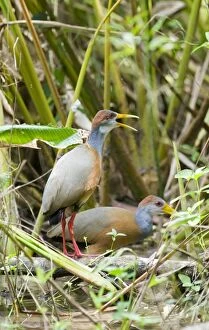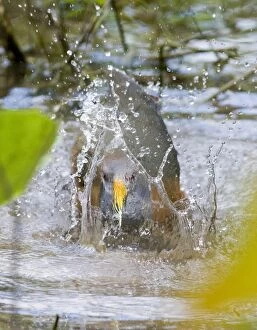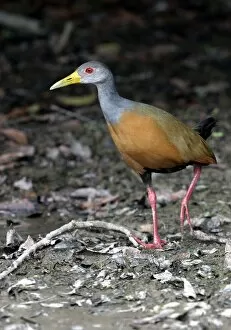Wood Rails Collection
The Grey-necked Wood-rail, also known as Aramides cajaneus cajaneus, is a stunning bird that can be found in various locations across Central and South America
All Professionally Made to Order for Quick Shipping
The Grey-necked Wood-rail, also known as Aramides cajaneus cajaneus, is a stunning bird that can be found in various locations across Central and South America. One captivating image shows an adult wood-rail standing gracefully on a branch along the Chagres River in Panama during the month of November. Its sleek grey neck and vibrant feathers make it a sight to behold. Another snapshot captures the same adult wood-rail braving rainfall while perched on a branch. The droplets glisten against its plumage, adding an enchanting touch to this already mesmerizing creature. This particular moment was also captured along the Chagres River in Panama. In Costa Rica's Cano Negro region, another Grey-necked Wood-rail adult is seen confidently walking on mud at the water's edge. Its delicate steps leave imprints behind as it navigates through its natural habitat with ease. This sighting took place in February when nature comes alive after winter's slumber. A different species within the wood-rail family is showcased by an image of a Giant Wood-rail standing proudly on a rock (although captive). Its size and stature command attention, making it impossible to ignore this magnificent bird. This specific encounter occurred somewhere unknown but still captivates viewers nonetheless. Moving southwards to Argentina's El Bagual grasslands, we witness yet another Giant Wood-rail gracefully strolling through tall blades of greenery during October. The contrast between its rich brown feathers and lush surroundings creates an exquisite visual display. Venturing into Guatemala's Tikal National Park brings us closer to witnessing Grey-necked Wood-rails engaging in their daily activities within lowland tropical forests. Whether they are walking amidst leaf litter or striding confidently along forest paths or even calling out to one another, these birds demonstrate their adaptability and resilience within their chosen habitats.





